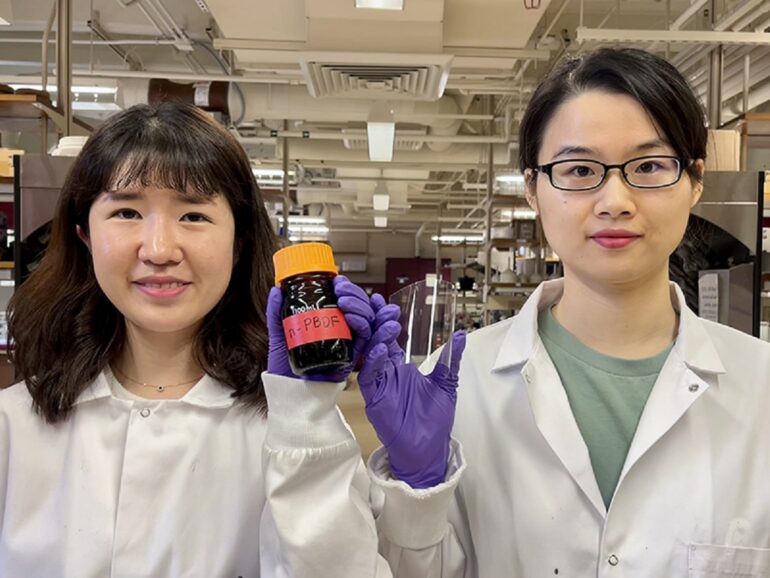Purdue University researchers have created transparent organic conductors from patent-pending polymers that achieve the same results and properties as traditional conductors made from rare-earth minerals but are less expensive and can be created from more plentiful reserves.
Transparent conductors are critical components in light-emitting diodes, touch screens, solar cells and other optoelectronic devices. Indium tin oxide (ITO) is used in more than 95% of global transparent conductors. It conducts electric current through a device, which is disrupted when a person swipes or taps a touch screen.
Jianguo Mei, the Richard and Judith Wien Associate Professor of Chemistry in the Department of Chemistry, said touch screens are made of several layers, including a top layer of glass or plastic, a conductive layer beneath it, and a circuit board that reads the signals sent by the conductive layer.
“When a user touches the screen, their finger creates a disruption in the electrical field generated by the conductive layer,” Mei said. “This disruption is detected by the circuit board, which can then determine the location of the touch and interpret it as a command, such as opening an app or typing a message.”
Because ITO is transparent as a thin film, users can view images, text and video through it.
Mei said traditional transparent conductors have drawbacks.
“Indium tin oxide films are mechanically fragile, which makes them undesirable in roll-to-roll manufacturing,” Mei said. “Also, indium is a rare-earth mineral with scarce reserves; the U.S. Geological Survey said the U.S. was 100% reliant on indium imports in 2021. Because demand for ITO films is increasing, the price of indium has soared. This has led to the search for alternatives, including metal mesh, graphene and earth-abundant metal oxides and organic conductors.”
Mei and his research team have created a patent-pending polymer from carbon-based materials that have a lower manufacturing cost and are easier to manufacture into thin films than indium through solution-coating processing. He said performance of the new thin-film transparent conductors also rivals that of conductors made with indium tin oxide.
“The polymer ink is shelf-stable for months under ambient conditions, compared to commercially available PEDOT:PSS,” Mei said. “Our new transparent organic conductors exhibit low sheet resistance and high transmittance compared to any other solution processable transparent conductors. Also, it exhibits excellent durability under accelerated weathering tests.”
Mei and his team’s research was published in the February 2023 issue of the Journal of the American Chemical Society. He said the next steps to advance the innovation are to continually improve the figure of merit of their organic conductor and develop ink formation for large-scale processing.
More information:
Zhifan Ke et al, Highly Conductive and Solution-Processable n-Doped Transparent Organic Conductor, Journal of the American Chemical Society (2023). DOI: 10.1021/jacs.2c13051
Citation:
Researchers build transparent conductors without expensive rare-earth indium (2023, April 24)
